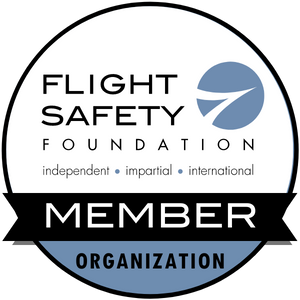Management of Change in the Airline Industry and Aviation: People, Processes, and Technology Required
Air operators never get any downtime. Be it from last-minute maintenance issues to management requests and demands, change is always in the air. Indeed, management of change is one of the most complex elements of an air operators’ day to day. Whether it’s as “simple” as moving hangars or as complex as onboarding a Boeing 777 onto the AOC, management of change is challenging. We spoke with Jim Gautrey, a long-time aviation industry maintenance executive, now with TrustFlight Aviation Services. His team provides bespoke tools, processes, and the required personnel to manage all manner of change for aviation organizations worldwide.
So, Jim, what exactly is change?
Jim: “Change ultimately is when an air operator becomes a more complex organization or undertakes a complex task that fundamentally makes the operator a more complex operator. If an operator transitions from one aircraft to three aircraft, that can be managed relatively simply. If they transition to say, three aircraft to ten, the air operator is a fundamentally more complex organization. Similarly, if an air operator wants to bring on a new type of aircraft — where the operator has little to no expertise or experience in terms of operating that aircraft — they will need the right personnel. The reality is that management of change can be all sorts of things. In each of these changes, you need people who understand the change.”
While are people so critical?
Jim: “Without the people, it’s a non-starter. The operator either has to employ them directly, or contract them, or find a consultancy that has the required experience. In my experience, to properly manage change, an air operator needs that combination of people, processes, and technology to support. An operator will have their personnel determine the requirements. They’ll be armed with a shopping list of all the IT systems, maintenance facilities, and spare parts for example. If they are not in hand, the operator must determine who will supply them. In the case of aircraft records, who's going to manage the aircraft records — who is going to manage all the software providers. So, yes, ultimately, it starts with the people.”
How does TrustFlight help clients manage change?
Jim: “Our team — or any sophisticated team working with an aviation firm or airline — will first analyze the change. The operator must understand the totality of the project. Do they know the full implications? A subset of this is an impact assessment — the process by which an air operator can assess the impact of any action on their operation. It’s a distilled version of management of change. ‘Can we deal with this impact? Or do we need a more in-depth examination?’. Adding a new type might require much more in-depth analysis. A change in the regulations might be relatively simple. For instance, the operator must understand the regulations, review the manuals, and then make them compliant. With a more complex process, the operator — with our assistance — might need to identify the right people, and understand what tools and processes those people need to address the changes. That could involve software solutions, or additional resources.”
This seems like it will involve a fair amount of third parties. Is that right, or can this be done in-house from the get go?
Jim: “Right. If the air operator is trying to make changes quickly — and most are — the most efficient solution at the start is to contract out the processes and solutions. The operator will come to an organization like TrustFlight because we've got off-the-shelf solutions. They could be managing the project initially with an Excel spreadsheet. Better, though, it could be TrustFlight SMS. TrustFlight SMS makes this easier because you can allocate tasks to individuals. You can repeat the tasks, and it’s an intuitive tool. As the operator progresses, TrustFlight continues, or the operator will scale to such a size where it's more cost-effective for the operator to bring certain functions in-house, and that’s fine by us. We've got them going, and we've helped them out. We can go and help the next firm that needs support.”
What role do the regulators take in the management of change?
Jim: “Oftentimes, what’s needed is to work with the regulator to help an operator explain the change. That is quite specialized knowledge. Part of the management of change is managing the expectations of the stakeholders, be that the regulator, the chief executive officer, or investors. Some clients, however, need more than an effective tool to manage the change, they need the help with the change itself.”
What are some ways the management of change goes wrong for an aviation operator?
Jim: “An air operator needs people that are wired like a project manager. Most people are not adept at project management. The right project manager is technically knowledgeable. They don't need to be an expert, but they've got enough information that they can understand what they're being told about. They're methodical and organized. They can track information and attention to detail. Second, management may not understand the full impact of the change they are seek, and the detail required. It can be very challenging to simply track all of the elements of change. To add a new type, for example, there might be 150 individual aspects that need to be addressed. An operator needs a system to track all of this.”
TrustFlight’s Aviation Services has roots in all aspects of aviation operational leadership. The team has supported and actively worked in all areas of the aviation industry from line flying and engineering design to maintenance and quality oversight. TrustFlight Aviation Services have delivered safe, reliable, cost-effective aviation solutions that allow our customers to scale their operations from small beginnings to large fleet operations.
Let's get started
Talk to our sales team to find out how you can transform your operation with our products and services.

